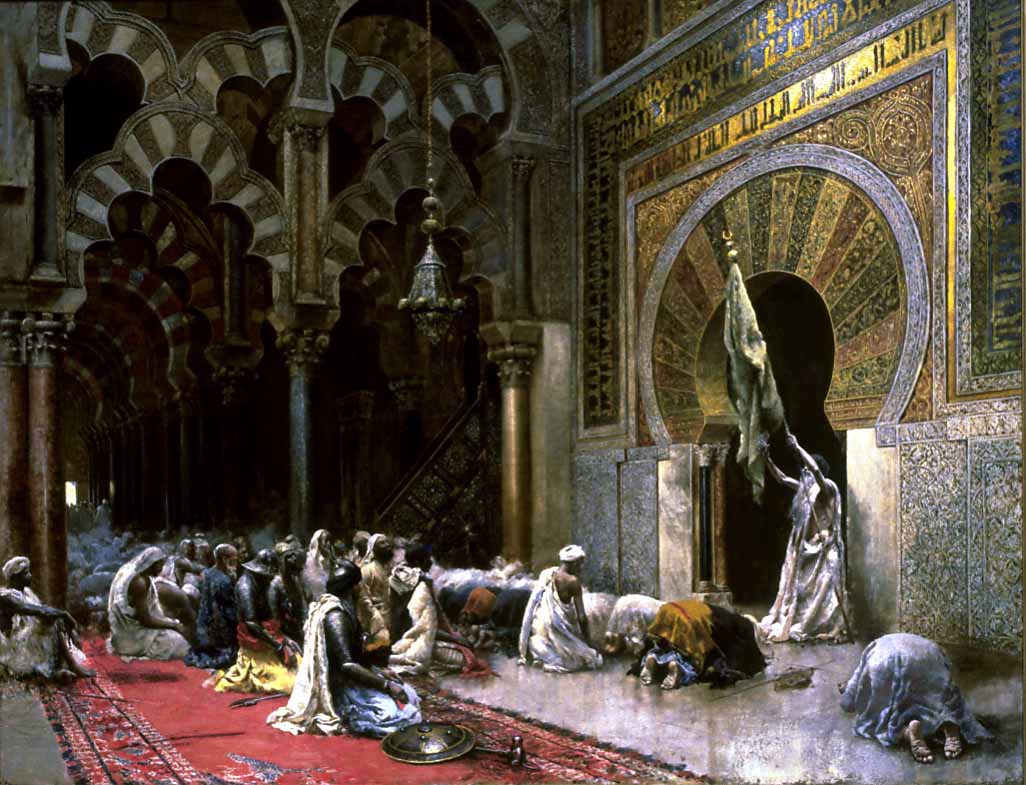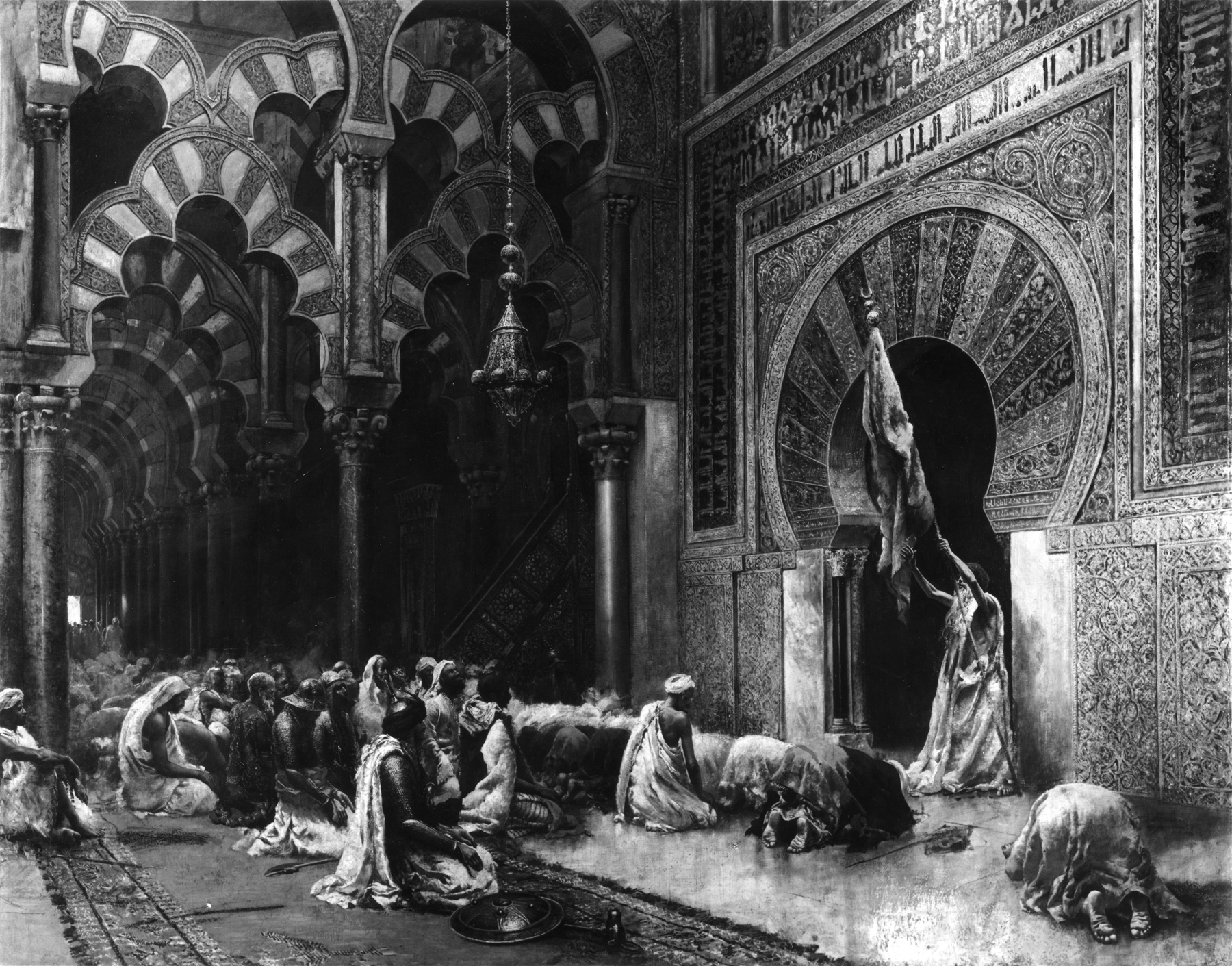Interior of a Mosque at Cordova
(18th and 19th Centuries )
After studying in Paris, Weeks emerged as one of the United States’ most prominent painters specializing in the depiction of foreign locations, from Spain to India. During his travels, Weeks spent time in Cordova, the capital of the first Muslim rulers of Spain from the 8th century. He chose the Great Mosque there, one of the most important surviving buildings from this period, as the subject for this large painting.
Despite this work’s illusion of reality, created by a profusion of ornamental and architectural details, many elements in the scene were enhanced by the artist for effect, or completely fabricated. For example, he enlarged the maqsura (royal enclosure) in front of the mihrab (niche toward which Muslims pray as it indicates the direction of Mecca) to allow for more figures to be shown. He also recreated the minbar (the wooden pulpit), which was lost when the building became a Catholic church, but instead of showing it at the left where it would have been positioned in a Mosque, Weeks changes its position for pictorial effect. Furthermore, figures in armor with weapons would not have attended Friday prayer. These changes not only combined to create a balanced, exciting, and persuasively accurate image but also inevitably reinforced European and American viewers’ misconceptions that sites of Islamic prayer were imbued with potential violence and holy war (jihad). Stereotypes of this kind characterized what was known as Orientalism, an extremely popular genre in the 19th century.
Provenance
Provenance (from the French provenir, 'to come from/forth') is the chronology of the ownership, custody, or location of a historical object. Learn more about provenance at the Walters.
Edwin Lord Weeks Collection Sale, American Art Galleries, New York, March 15-17, 1905, no. 269; puchased by Henry Walters, Baltimore, 1905; by bequest to Walters Art Museum, 1931.
Exhibitions
| 2014-2016 | From Rye to Raphael: The Walters Story. The Walters Art Museum, Baltimore. |
| 2010-2011 | L'Orientalisme, de Delacroix a Kandinsky. Musees royaux des Beaux-Arts de Belgique, Brussels; Kunsthalle der Hypo-Kulturstiftung, Munich; Musée des Beaux-Arts, Marseille, Marseille. |
| 2000-2001 | Noble Dreams, Wicked Pleasures: Orientalism in America, 1870-1930. The Sterling and Francine Clark Art Institute, Williamstown; The Walters Art Gallery, Baltimore; Mint Museum of Art, Charlotte. |
Conservation
| Date | Description | Narrative |
|---|---|---|
| 10/15/1980 | Treatment | lined; inpainted; coated |
| 10/15/1980 | Examination | examined for condition |
| 6/4/1990 | Technical Report | examined for technical study |
| 2/1/1993 | Treatment | inpainted; other |
| 4/3/1993 | Examination | examined for condition |
| 11/11/1998 | Loan Consideration | examined for loan |
Measurements
H: 56 1/8 × W: 72 5/8 in. (142.56 × 184.47 cm); Framed H: 72 ×W: 88 × D: 3 3/4 in. (182.88 × 223.52 × 9.53 cm)
Credit Line
Acquired by Henry Walters, 1905
Location in Museum
Not on view
Accession Number
In libraries, galleries, museums, and archives, an accession number is a unique identifier assigned to each object in the collection.
In libraries, galleries, museums, and archives, an accession number is a unique identifier assigned to each object in the collection.
37.169




